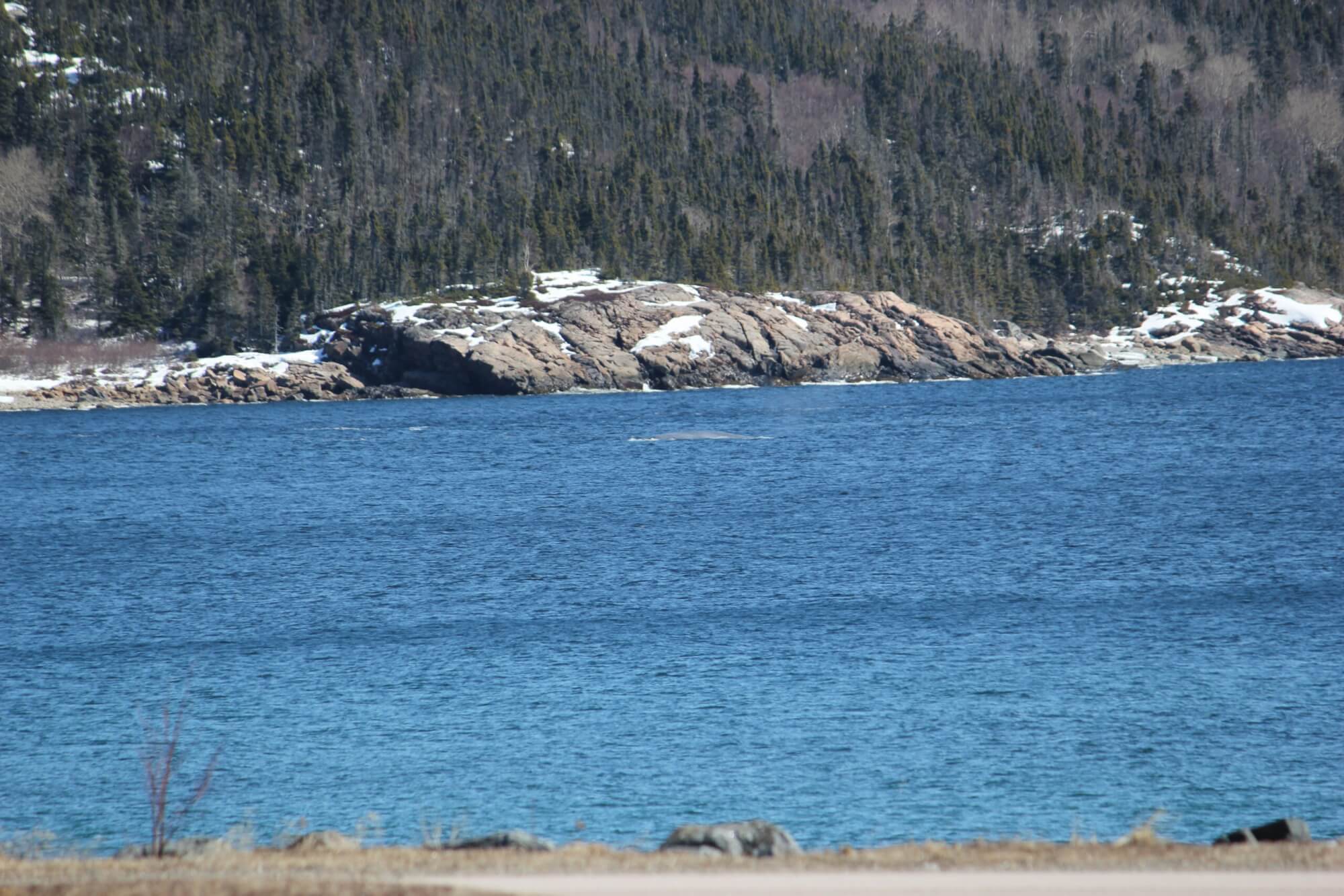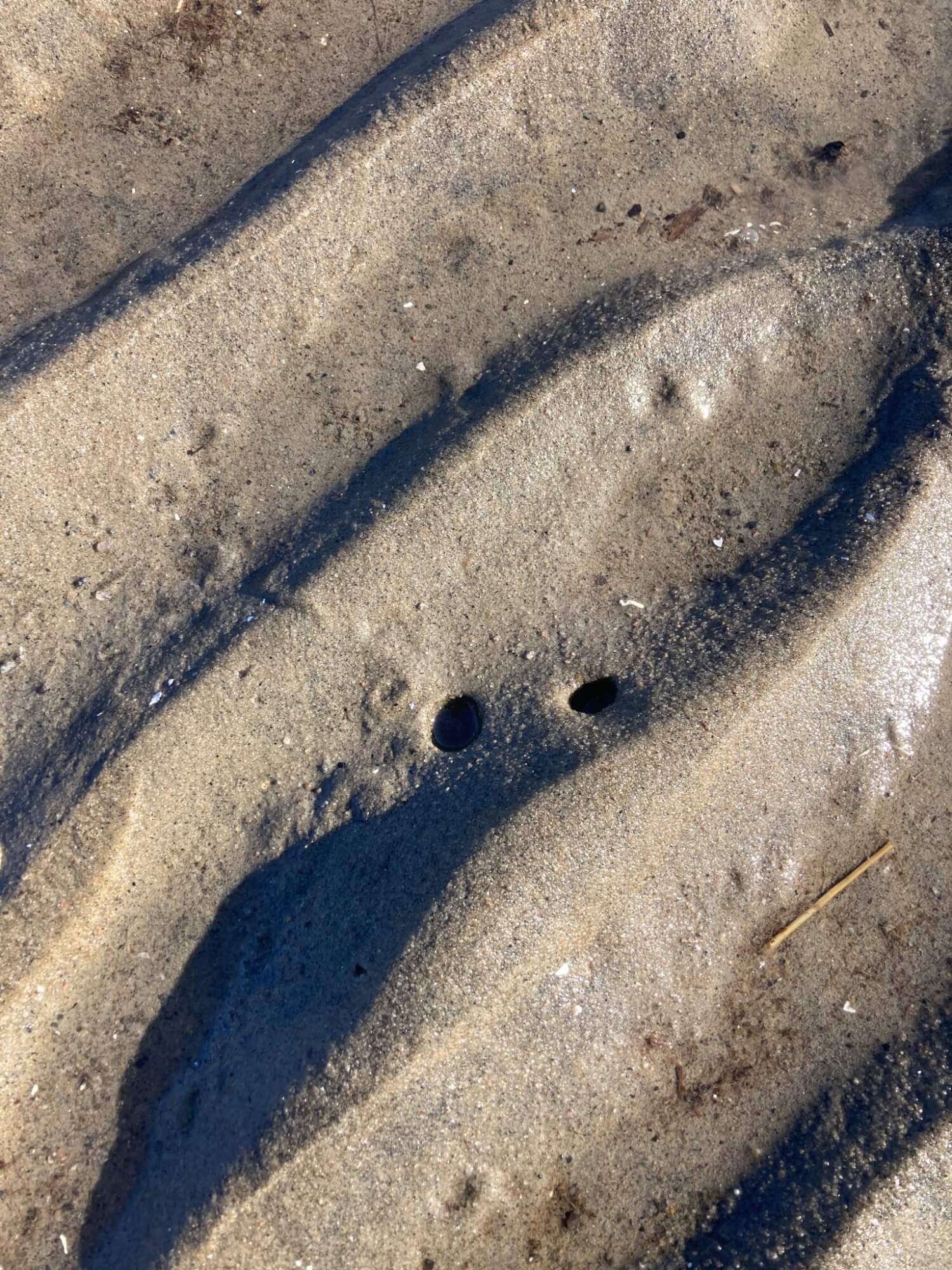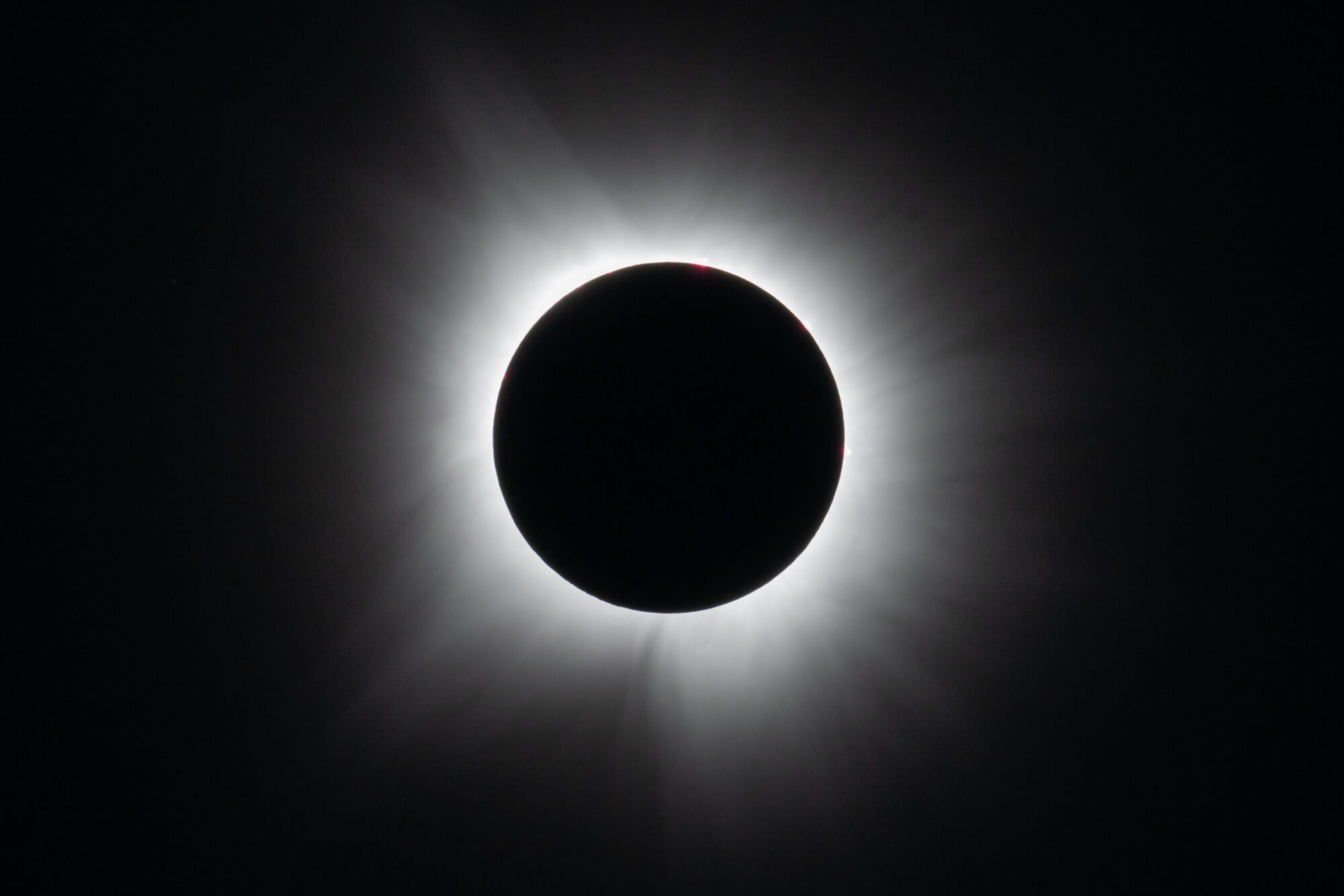On April 8, the banks of the St. Lawrence were basked in sunset-like lighting during the solar eclipse. For those who had the chance to be on the river, the combination of marine mammals and a rare astronomical event was a bit surreal! None of the large rorquals, belugas or seals observed displayed any unusual behaviour, though birds seemed to show a bit more reaction.
Mysterious belugas
In addition to being a once-in-a-lifetime event, the solar eclipse of April 8 was an awesome phenomenon to admire. With clear skies and a radiant sun, the weather across Quebec was on our side. The southernmost parts of the province were able to enjoy a total eclipse, meaning the Moon completely obscured the Sun, while regions farther down river were able to witness obscuration generally in excess of 90%.
On the rocks of Pointe de l’Islet, in Tadoussac, two friends sat down to soak up the event. Located at the mouth of the Saguenay Fjord, the site is a prime location for marine mammal viewing. On this special day, belugas were present, their backs glistening in the sun. “In addition to spotting my first belugas of the season, it was crazy to continue to observe them while the sun slowly began to wane! Even if the eclipse was not complete, the ambiance was very special, even a bit magical! The belugas eventually disappeared after a while, not to be seen again.”
During the week, belugas were also seen near Les Escoumins and from Cap de Bon-Désir in Les Bergeronnes. For residents of Saint-Siméon, it was the first sighting of the year of these white whales. Several individuals were cruising around and could be seen off the beach.
Action in the Gaspé
There were multiple sightings this week in Gaspésie: three large blows off Cap des Rosiers, blue or fin whales in Gaspé Bay, two humpbacks opposite Cap-aux-Os, four minke whales and a fin whale in Percé. The list keeps getting longer and longer! The presence of all these animals is very exciting. Their feeding behaviours, the way they breath and their interactions spark a fascination that continues to grow for those who pay attention. One marine mammal enthusiast describes her experience observing humpbacks: “They were much closer and were feeding on the surface. We could even see their mouths. It was awesome! Afterwards they drifted a little farther out but remained quite active near the surface. We got brief glimpses of their backs as they surfaced frequently to breath. They lingered for a good while!”
Whales and seals during the eclipse
One naturalist set up camp at Cap de Bon-Désir to observe the eclipse. It was in the company of a harbour seal that he was able to admire the changes in light. The animal poked its head out of the water from time to time, but otherwise did not show any particular reaction. This was not the case for the brant, which seemed to become agitated during the second phase of the eclipse when the sun gradually reappeared: “All the brant “woke up,” as if it were dawn, took off and headed northeast. […] Over 2,000 individuals passed before my eyes in an enormous “morning flight”… at 4 in the afternoon!”
»
A little farther east, on the coast near Franquelin and Godbout, a number of large rorquals were once again very present this week. These cetaceans reportedly included at least one or two blue whales. At a distance, it’s not always easy to identify the species! A first-of-the-year minke whale was also reported in Franquelin. Will these animals soon return to settle in the St. Lawrence for the summer?
One enthusiast had the opportunity to admire the partial eclipse in the presence of a few whales. “Three of them grouped together where I was, and the darkening of the sky didn’t seem to have much impact on their behaviour.On the other hand, the unusual lighting effects made it possible to admire some fantastic landscapes!” As for pinnipeds, two harp seals and one harbour seal were reported in the area. Near Gallix, nothing special on the sea to report during the eclipse, though a few harbour seals were present at the mouth of the Sainte-Marguerite River.
Clamming and a funny-looking fish
Undoubtedly, one of the biggest advantages of living near a waterfront is the chance to take strolls on the beach and observe the local wildlife. One popular outdoor activity is recreational shellfish harvesting, which provides an opportunity to make interesting observations.
It was during one of these harvests that a resident of the Côte-Nord region happened across a strange-looking fish. “While out for walk at low tide, watching the seaweed dancing in the rising tide, we were able to observe a lumpfish. Difficult to see at first, it looked like a clump of algae trapped in a small pool of shallow water. With the expansive tidal flats in Longue-Rive, the view at low tide was most relaxing.” The lumpfish, also nicknamed “henfish” because of its appearance and the way it swims, is a fish found in the North Atlantic, especially rocky areas with vegetation.
Before embarking on an activity such as shellfish harvesting, however, you should educate yourself on current regulations, clamming techniques and where this activity can be practised .
Detour to see the total eclipse
As for me, I made a little detour via Sherbrooke to witness the phenomenon at its fullest. I had prepared myself by reading up on the subject, searching for a high vantage point, picking up a pair of protective glasses, etc. Even though I was expecting to see something incredible, the sudden drop in brightness, the stars visible in broad daylight and even the glowing black ball in the middle of the sky managed to fill me with indescribable awe. Like many folks across Quebec, I was enchanted by the poetry of this rare astronomical event.
Thanks to all our collaborators!
Special thanks go out to all our observers who share their love for marine mammals with us! Your encounters with cetaceans and pinnipeds are always a pleasure to read and discover.
On the water or from shore, it is your eyes that give life to this column.
Odélie Brouillette
Laetitia Desbordes
Vincent Gaillard
Hélène Lahaie
Jade-Audrey Lavergne
Diane Ostiguy
Sandrine Papias
Renaud Pintiaux
Pascal Pitre
Andréanne Sylvain
Marielle Vanasse
J. Varin
Patrick Weldon
And all those we left out!
Additionally, we would like to acknowledge the following teams that also share their sightings:
Mingan Island Cetacean Study (MICS)
Marine Mammal Observation Network (ROMM)
Quebec Marine Mammal Emergency Response Network (QMMERN)
Group for Research and Education on Marine Mammals (GREMM)
Would you also like to share your observations?
Have you seen any marine mammals in the St. Lawrence? Whether it’s a spout offshore or just a couple of seals, drop us a line and send your photos to [email protected] !










